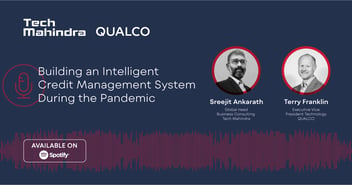Amplifying Return on Experience (ROX) in Debt Collections using Αnalytics
QUALCO |
While change is the only constant, one thing is certain. External events like the pandemic will continue to transform customer behavior in a permanent manner. Customers are becoming more sophisticated and the same goes with the solutions they expect from financial institutions. Luckily, customer data are flowing like an ocean around us. Their use has the potential to give lenders the missing piece of the puzzle on how to address their customers’ needs and, ultimately, to increase Return on Experience (ROX), which is becoming a highly important measure in today’s business world.
What is ROX
According to PWC, ROX is a metric that enables companies to measure, understand, and increase the value of their investments in areas focused on experiences be it for customers, employees, or company leaders. This is not a siloed metric or another net promoter score. It is rather a way for businesses to gain a complete view of how well they are meeting customer expectations around their offerings.
In simple words, ROX is providing insights to the companies about the experiences that lead to the desired results. One of the most crucial steps to get there is to leverage the wealth of customer analytics as this will enable companies to understand what behaviors actually lead to the results they are pursuing.
Challenging the status quo for debt collection
Beyond doubt, the old-style debt collections approach has long been outdated. Today, customers are tech-savvy, they prefer to self-serve and to engage digitally with the companies they interact with. They also respond better to personalised and timely communication. How can the collections approaches stay the same when the customers have drastically changed?
Considering all the above, for the credit institutions that are looking to enhance their ROX and increase their debt collections, they first must wonder if they are on track to shifting from a reactive to a proactive approach when it comes to the identification of customers that might struggle to cover their debts. But to do so, they need to look at their data to evaluate the resilience of each customer and understand at which point they are standing. For example, they need to monitor when a customer starts to make the minimum payments or late payments to prioritise them.
That is where customer analytics comes in. By utilising Advanced Analytics, financial institutions are now empowered to enhance their interactions with each customer by offering personalised solutions that fit their exact needs and inform their decisions and pick an optimal strategy for each segment. This will lead to superior customer experiences since each case will be handled in the most appropriate manner.
Customer analytics-driven approach for next-generation collections
There is a saying in the past years: “Data is the new oil.” If the credit market taps into data and starts shaping modern strategies based on advanced analytics it will be in pole position to segment customers according to their particular characteristics. This by itself is so powerful that will lead to:
- Improved ROX
- Increased cash flow
- Increased recovery rates
- Lower operations costs
Overall, customer analytics is the answer to the creditors quest to reach new heights since that will lead to refined customer experiences and ultimately, to higher debt collection rates.
#NEW PODCAST
Tech Mahindra together with QUALCO, proactively optimise collections process across the Financial Services (FS) customer journey. We utilise the most suitable contact channels and then offer contextual solutions that ensure customer and business sustainability while enhancing the value of collections.
-1.png)


.jpg?width=352&name=498x262-BlogPost-1-FINAL%20(1).jpg)